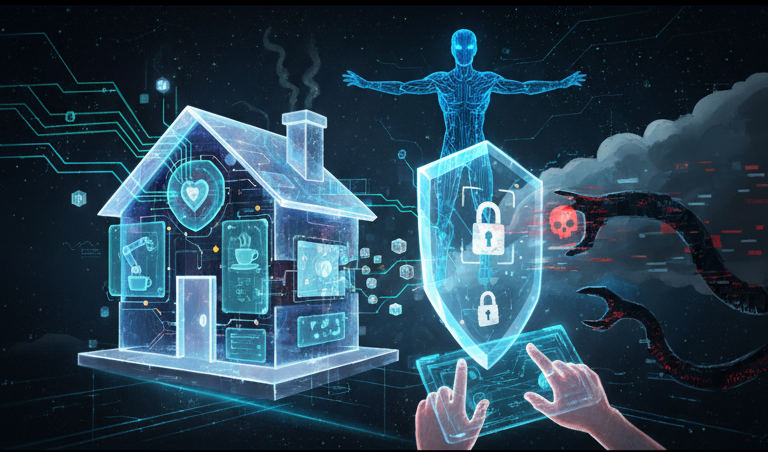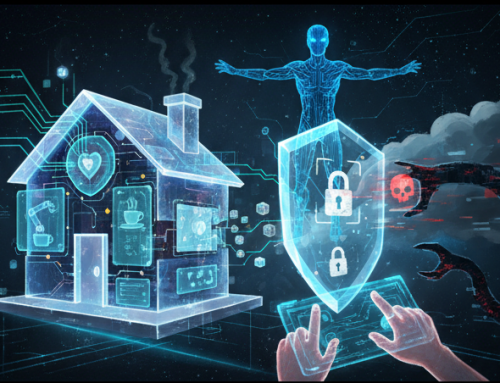The connected home is no longer futuristic—it’s reality. From smart locks and thermostats to cameras and refrigerators, the Internet of Things (IoT) has transformed how people live, work, and interact with their environment. Yet behind this convenience lies a growing threat: every connected device is a potential entry point for cyberattacks.
Today’s smart home owner isn’t just managing gadgets—they’re managing risk. And understanding those risks is the first step toward securing what matters most.
The Rise (and Risk) of the Smart Home
Smart homes promise simplicity: lights that learn daily routines, security systems that respond automatically, and voice assistants that anticipate needs. But the same connections that make life easier can open digital doors to intruders.
Recent data highlights the problem. Studies have found that up to 80% of consumer IoT devices contain known vulnerabilities, and attacks targeting smart homes are rising sharply—more than 100% year-over-year in 2024. The reason is clear: mass adoption has outpaced security awareness and regulation.
Why IoT Devices Are So Vulnerable
Most IoT devices are built for affordability and convenience, not defense. Manufacturers often rush to market, leaving security as an afterthought. Key issues include:
-
Default credentials: Many devices still ship with factory usernames and passwords like “admin” or “1234.”
-
Unpatched firmware: Users rarely update device software, leaving known exploits unaddressed.
-
Weak encryption: Sensitive data such as video streams or credentials often travel unencrypted across home networks.
-
No unified standards: With dozens of communication protocols and inconsistent compliance requirements, users face a fragmented security landscape.
Even everyday devices—smart plugs, TVs, routers—can become the weakest link. Once compromised, an attacker might pivot from one device to another, silently breaching the entire network.
Real-World Threats from Compromised Devices
Smart home breaches aren’t just theoretical. They’ve led to real harm and privacy violations:
-
Unauthorized access: Hackers have hijacked cameras and baby monitors, streaming private household footage online.
-
Data exposure: Compromised smart lighting or energy systems can reveal occupancy patterns and daily routines.
-
Botnet recruitment: Attacks like the Mirai botnet exploited millions of unsecured devices to flood internet servers with traffic, crippling websites globally.
-
Device “bricking”: Malicious firmware updates can permanently disable hardware—a costly and frustrating outcome.
The takeaway? Every connected device can double as both a helper and a hazard.
Striking the Balance: Convenience vs. Security
The smart home industry faces the same dilemma consumers do: balancing effortless control with responsible design. While most users assume devices are secure by default, 9 out of 10 consumers report low confidence in IoT security. Interestingly, most say they’d pay more for safer devices—but only a few follow through.
Meanwhile, manufacturers focus on innovation and market share, rarely prioritizing privacy by default. “Security by design” remains more of a slogan than a standard. As a result, accountability often falls back on users—those least prepared to manage complex network risks.
How to Secure Your Smart Home Today
Building a secure smart home doesn’t require a cybersecurity degree—it requires awareness, discipline, and a few strategic steps:
-
Change default passwords. Use strong, unique credentials for every device.
-
Keep firmware updated. Enable auto-updates whenever possible to patch known flaws.
-
Segment your network. Place IoT devices on a guest or dedicated VLAN separate from laptops and phones.
-
Use modern encryption. Ensure your router runs WPA3 and avoid legacy protocols.
-
Enable multi-factor authentication (MFA). Especially for apps controlling locks or cameras.
-
Vet the manufacturer. Choose brands with clear update policies and transparent privacy terms.
-
Limit voice and data permissions. Review app settings regularly and disable unnecessary features.
Small, consistent actions can create an enormous barrier to attackers.
The Future of Smart Home Security
Emerging technologies promise a safer connected future. Artificial intelligence is helping identify network anomalies in real time, while zero-trust frameworks—which verify every device and user each time they connect—are becoming accessible to consumers.
Blockchain authentication may soon secure communications between devices, and quantum-resistant encryption is on the horizon. Meanwhile, global initiatives like the EU Cyber Resilience Act, the UK PSTI Act, and the U.S. Cyber Trust Mark are establishing much-needed accountability. Standards such as Matter and ETSI EN 303 645 aim to unify how IoT security is measured and enforced worldwide.
Still, the most powerful security layer isn’t technological—it’s human. Education and vigilance remain the strongest defense.
Security Is the True Smart Choice
The connected home can be both convenient and secure—but it requires intention. Every user decision, from password hygiene to manufacturer choice, shapes how safe their digital environment becomes.
Smart homes reflect progress, but without cybersecurity awareness, progress can quickly become exposure. Protecting your IoT ecosystem isn’t just about maintaining privacy—it’s about ensuring your home remains smart in every sense of the word.





